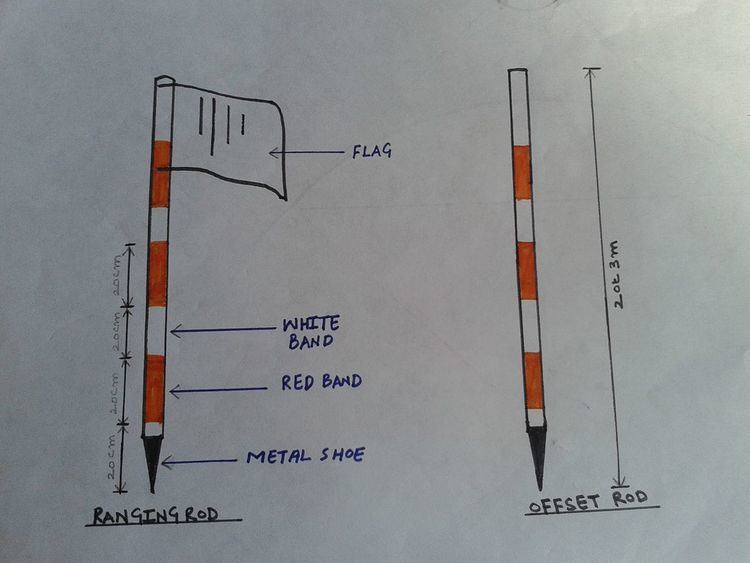 | ||
A ranging rod is a surveying instrument used for marking the position of stations and for sightings of those stations as well as for ranging straight lines. Initially these were made of light, thin and straight bamboo or of well seasoned wood such as teak, pine or deodar. They were shod with iron at the bottom and surmounted with a flag about 25 cm square in size. Nowadays they are made of metallic materials only. The rods are usually 3 cm in diameter and 2 m or 3 m long, painted alternatively either red and white or black and white in lengths of 20 cm (i.e. one link length of metric chain). These colours are used so that the rod can be properly sited in case of long distance or bad weather. Ranging rods of greater length, i.e., 4 m to 6 m, are called ranging poles and are used in case of very long survey lines. Another type of ranging rod is known as an offset rod, which has no flag at the top. It is used for measuring small offsets from the survey line when the work is of an ordinary nature.
